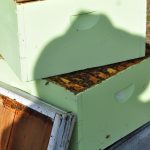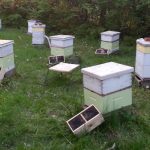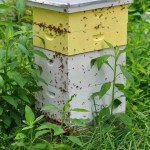This is a question, and my reply, that I received as a result of my June 20th post regarding the registration of oxalic acid as a varroa mite control product. I appreciate the question, as I have been hearing a great amount of discussion among beekeepers on how to avoid purchasing a labeled product by mixing up the chemical themselves.
A beekeeper in Kentucky writes,
Phil,
Myself and others have been referred to Amazon.com to purchase oxalic acid, since the bee supply companies can’t sell it in most states yet. The problem is, CAS# 144-62-7, or Oxalic acid dihydrate (the crystalline form), not wood bleach, is marketed online as being 99% pure. So I was very surprised to read from you that the approved solution for bees is 3%. I don’t think very many people are aware of that. Any suggestions?
Thanks,
Phil’s reply
I am sure that a number of U.S. beekeepers have been using oxalic acid for years, just as many have been using (and I’m certain some still do) homemade formulations of formic acid. Though purchasing and using non-labeled forms of either chemical for varroa mite control is illegal, the employees of state pesticide departments are very busy monitoring the application of legal pesticides, and it is rare for a beekeeper, especially a small scale beekeeper, to be cited for what we call off-label pesticide use. However, the odds of getting caught are not the only consideration.
The issue you inquire about, of getting chemicals in a proper, safe, and effective concentration, is one of the major reasons for pesticide labeling regulation. Before a product can be registered, a great deal of research goes into determining the optimum concentration and method of application for both safety and effectiveness. I have heard horror stories of beekeepers burning off the tips of their fingers or damaging their lungs while handling full strength formic acid. Continue reading →





